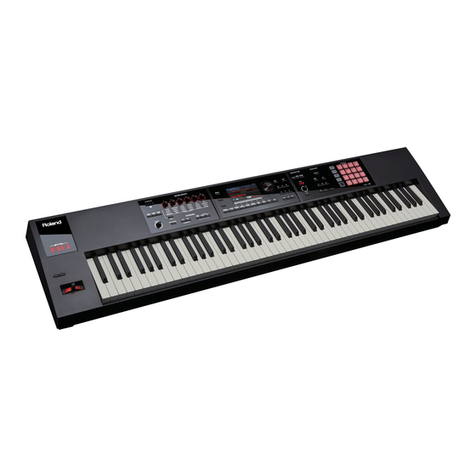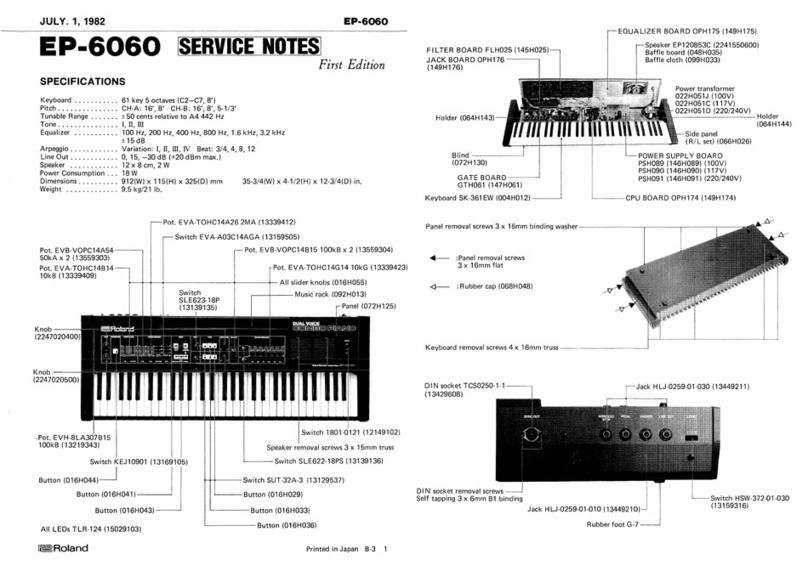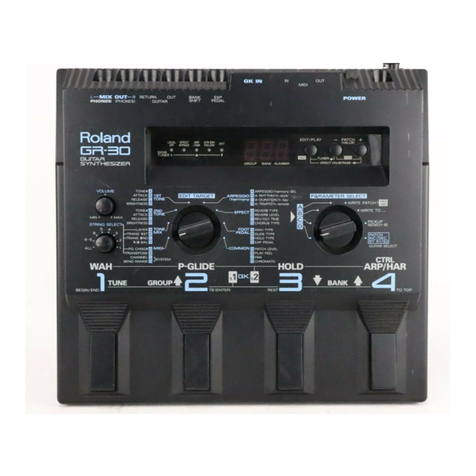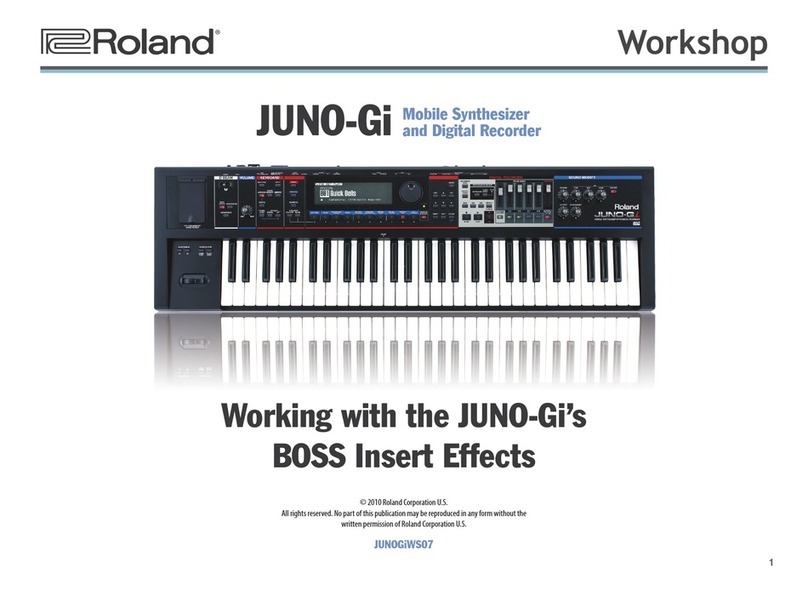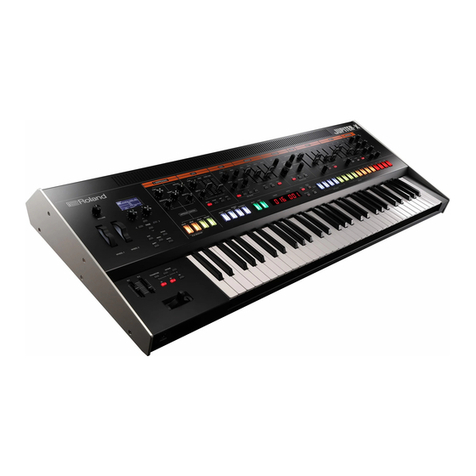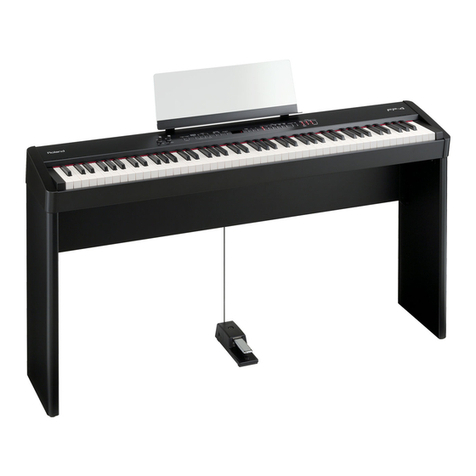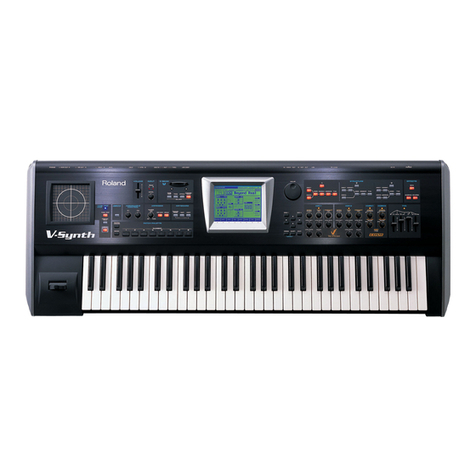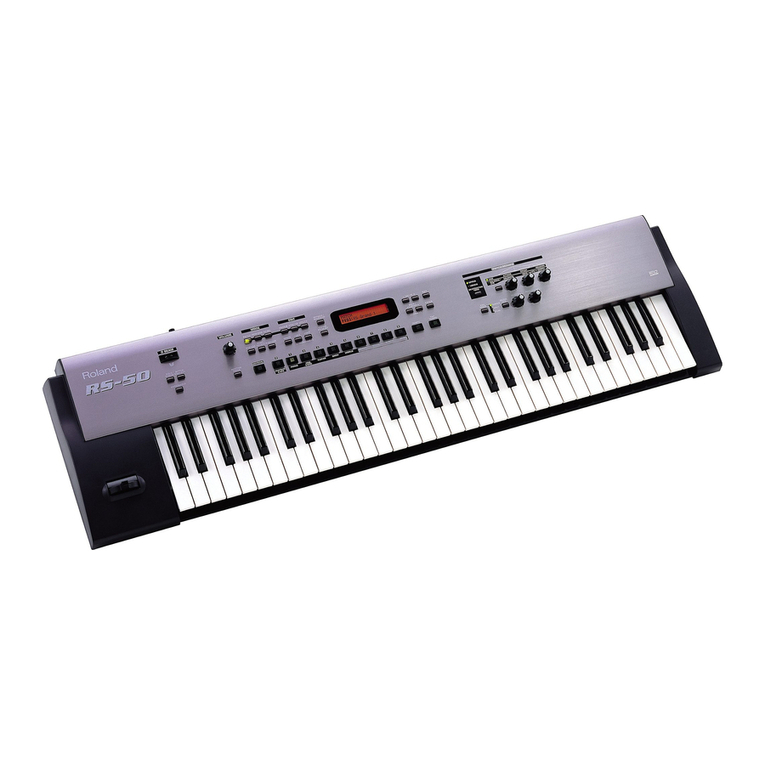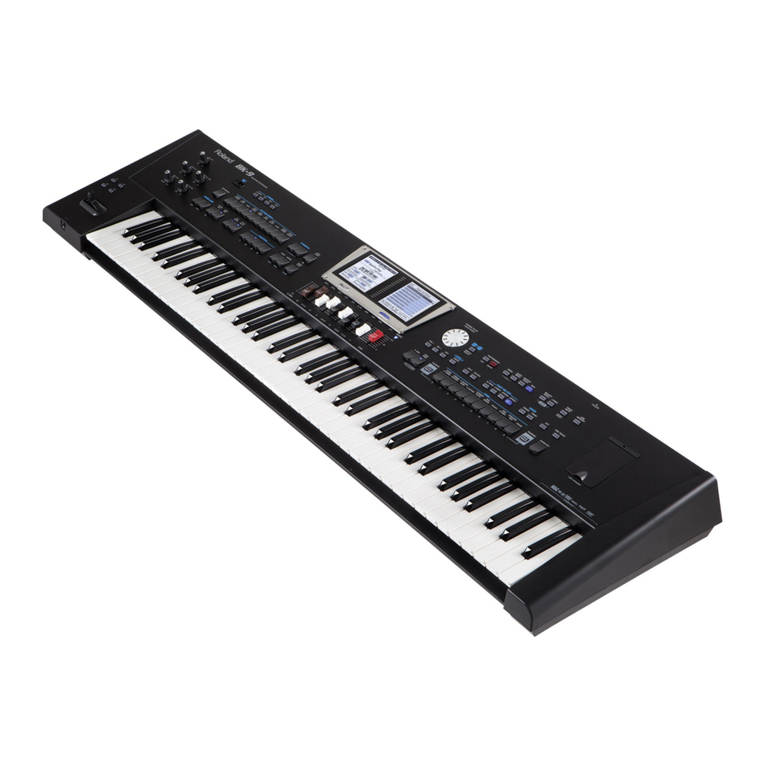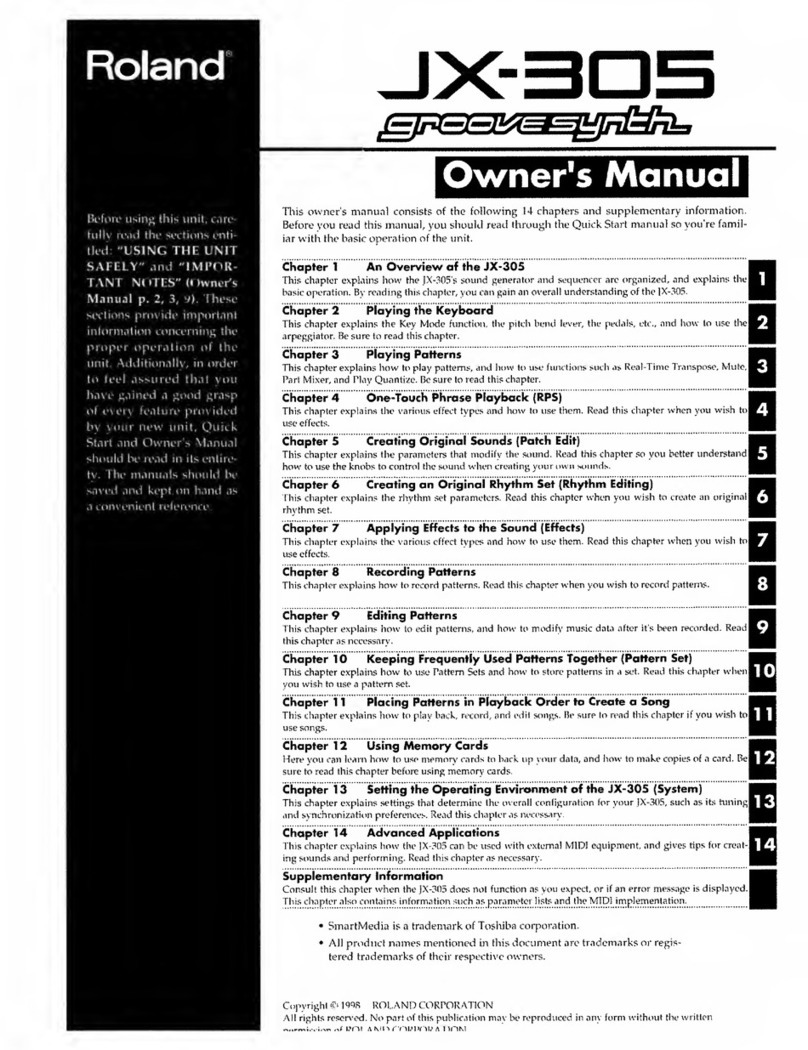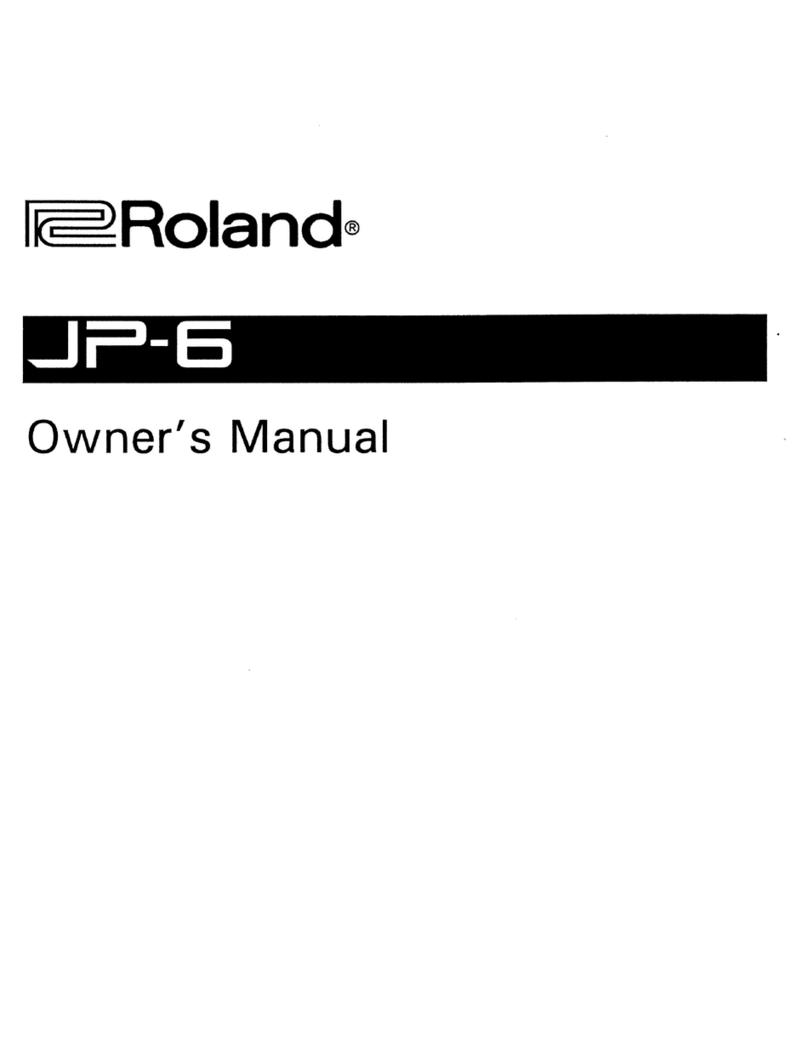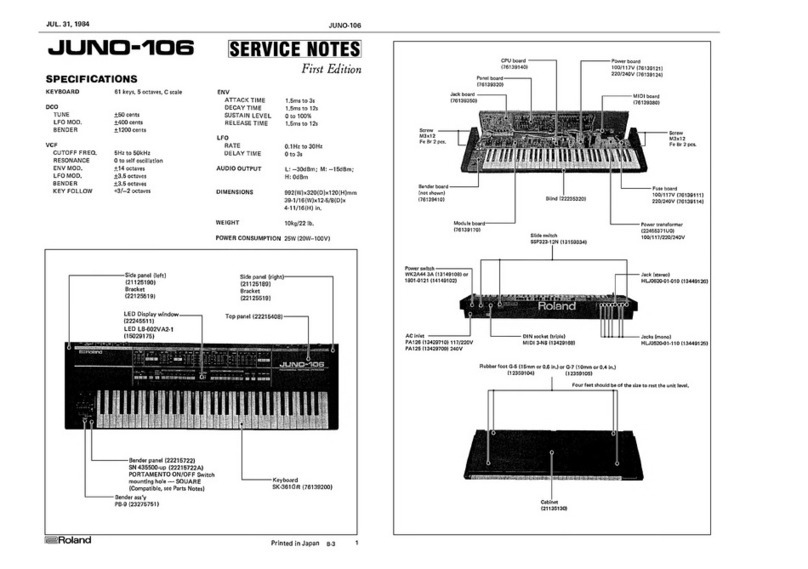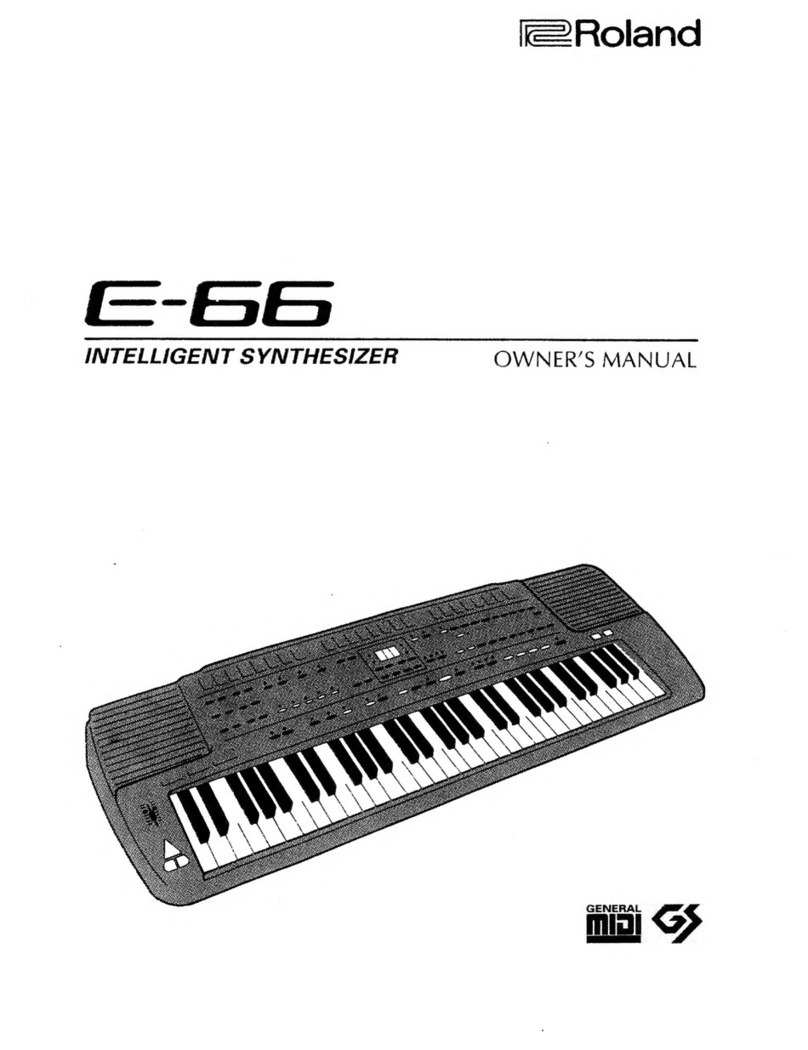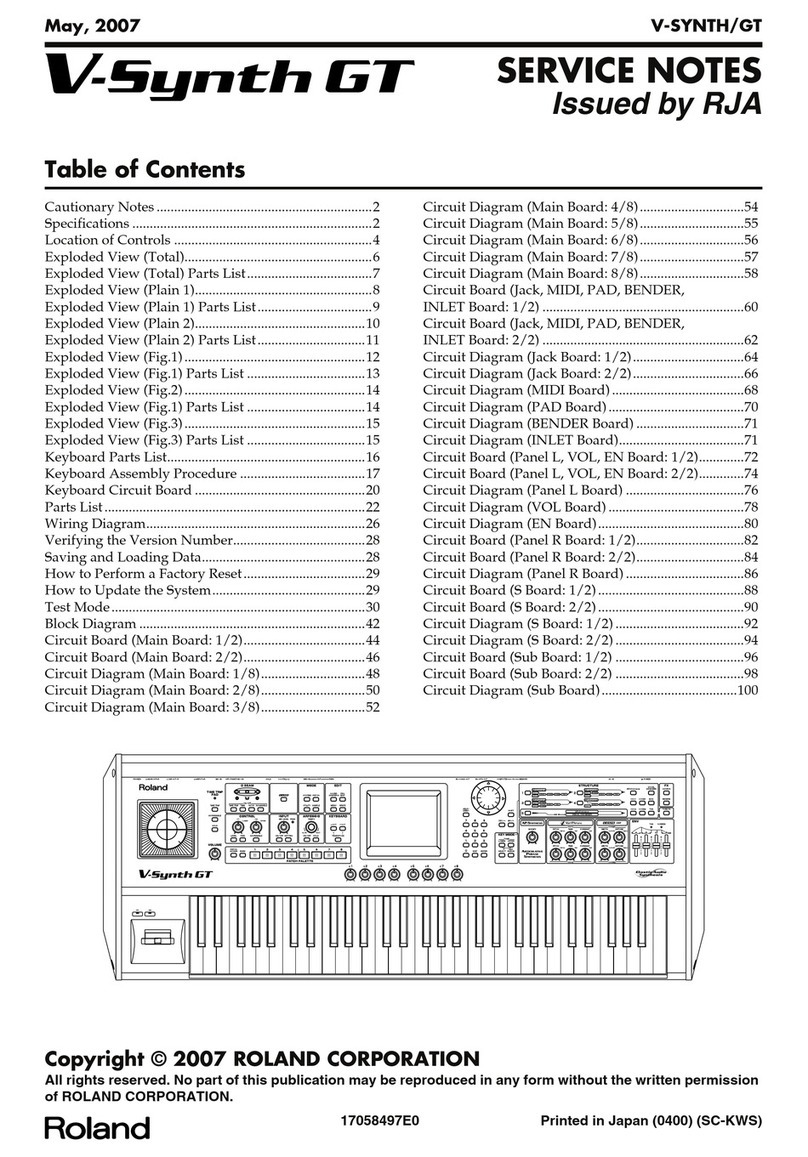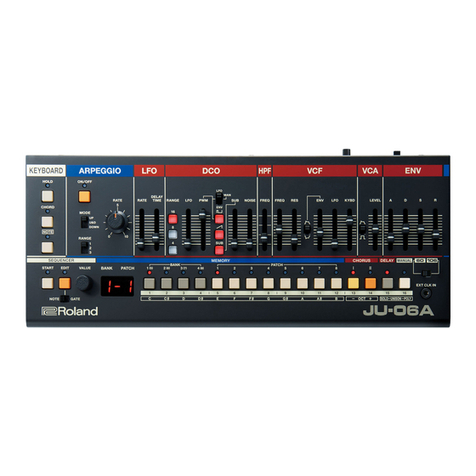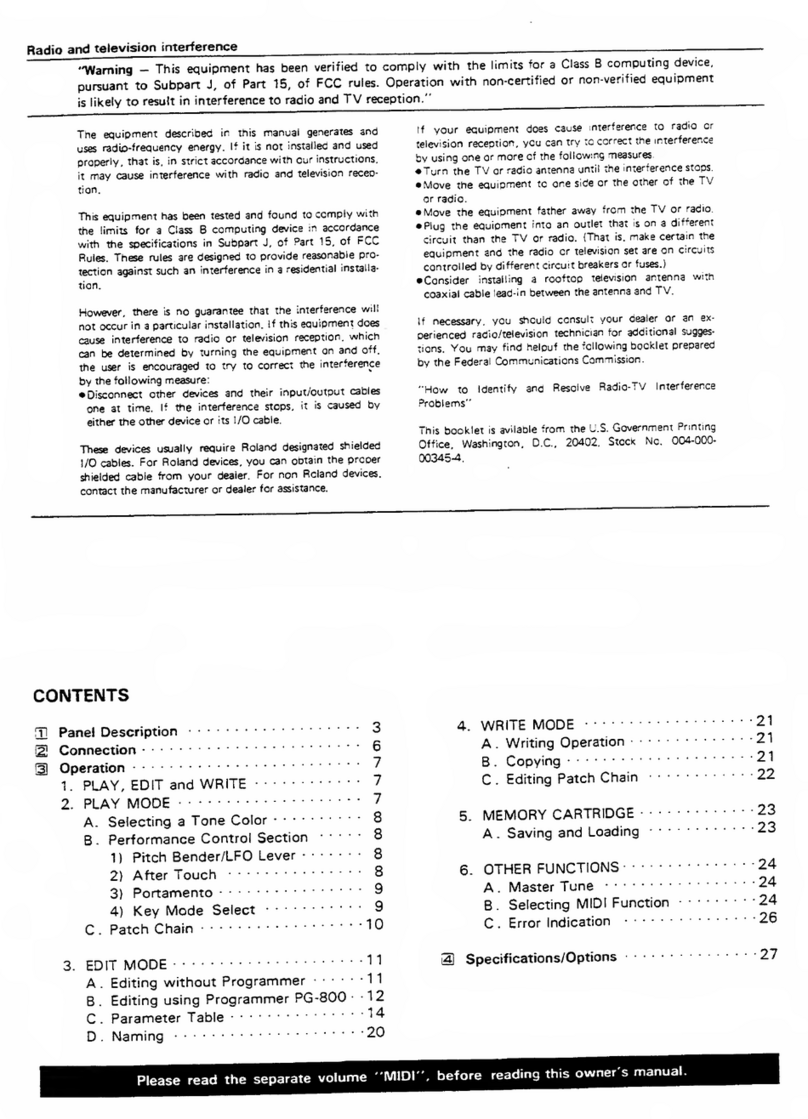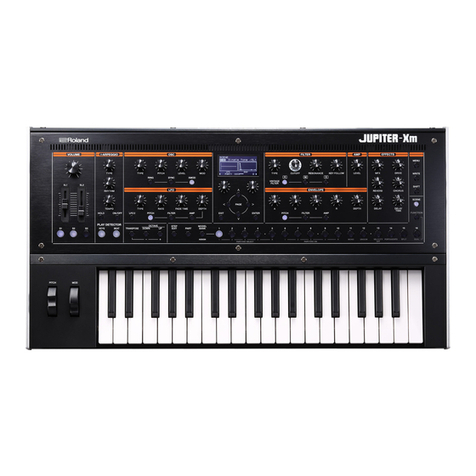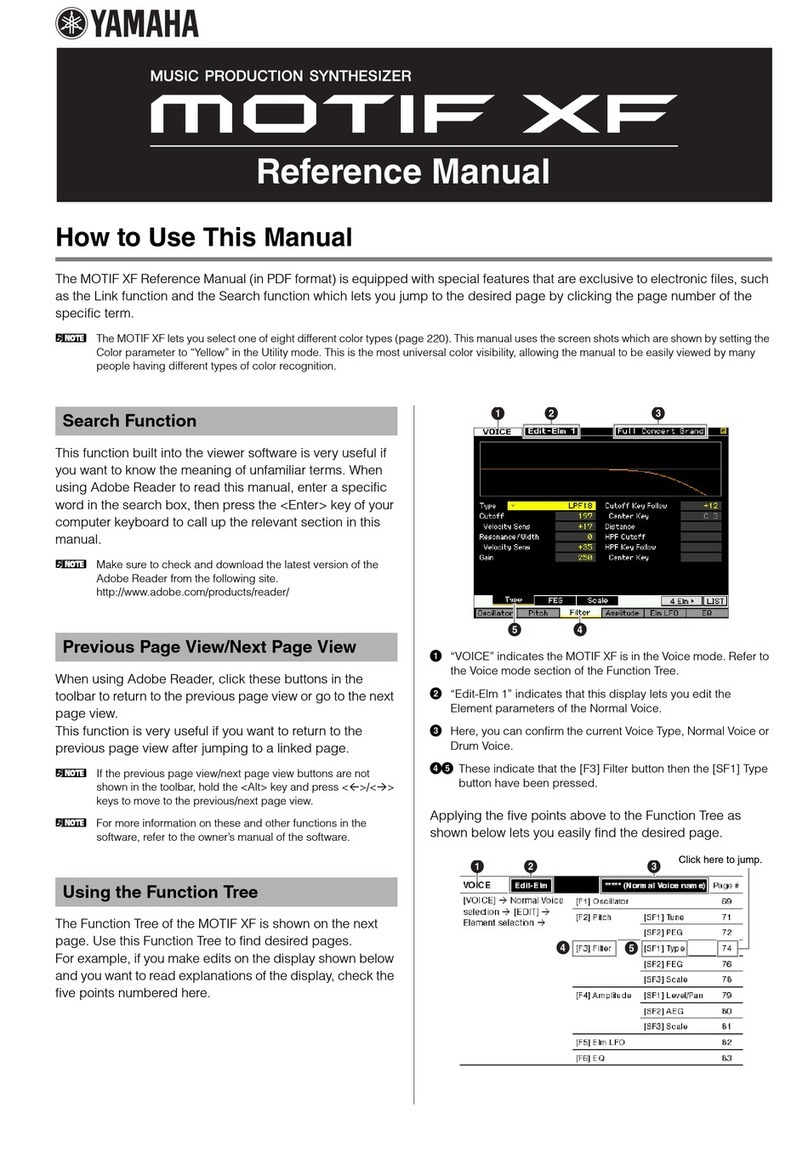
INTRODUCTION
The Roland JX-10 is a fully programmable 12 voice polyphonic synthesizer. Various sounds and performance
control functions can be stored, ready to be used.
•The JX-10 features the memory capacity that can retain up to 64 different programs (= Patch Memory) which
are the combinations of sounds (Tones) and performance control functions.
•Any of the Patch Memory can be called just by pushing appropriate buttons.
•The Patch Memory you have written into memory can be easily edited whenever you like
•Using the Memory Cartridges, it is possible to expand the memory capacity.
•Thanks to the new and refined MIDI implementation the JX-10 can be edited via sys-ex and dedicated Editor
Librarians such as emagic SoundDiver®, SoundQuest MidiQuest® and other editors expecially designed for
the Apple iPad. To dump and load patches there’s no need to keeping M-64C inserted
•The 76 key keyboard and MIDI functions make the JX-10 an excellent masterkeyboard
New midi implementation
•Each parameter is now OFF/RECV/SEND/ON, allowing fine control of what gets sent and what is filtered.
•Sysex support : allow edition of patch, tone A and tone B individually. (No need for M64 cartridge)
•Fast bulk dump/load : 4-5 seconds to dump everything. Can dump to/from cartridge and internal memory.
•Edition of parameters (patch and tones) sends sysex, so all editions can be sequenced. PG800 is also
supported here, so editions made from the PG800 can also be sequenced.
•Copy from/to cartridge to create a full backup of the internal memory (all settings are now copied to the
cartridge or restored from it)
Controls C1 and C2 enhancements
•Any tone parameter can be assigned to C1 or C2
•Any arpeggiator parameter can be assigned to C1 or C2
•C1 and C2 can be used, in tone edit mode, to modify upper/lower tone parameter. This allows quick editing of
tones for those who don’t have a PG800.
Arpeggiator
•8 arpeggiators “patches”
•Internal or external synchronization
•Supports up, down up/down, as played and random notes ordering
•Various arpeggio types
•Velocity setting (fixed or as played)
•Note duration (1-15 or legato)
•Use lower split point to control which notes are arpeggiated
PG-800 support
•New display options
•Control whether updates from sysex, PG-800 or controllers are displayed temporarily on-screen
Compatibility mode
•Allows to disable new features for full compatibility with old software (for example, sysex changes made to tone
A can be redirected to the currently selected tone, etc...)
Test modes
•Test hardware controllers (voices, A/D controllers (aftertouch, bender, C1/C2), keyboard)
•Test memory chips
Roland JX-10 Manual– Firmware ver 3.00 ADDENDUM
Pag. 3 of 53
